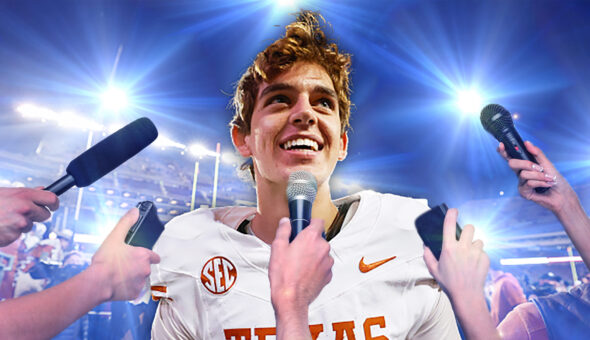One of the hottest granular debates in digital marketing circles is whether, and to what extent, the growing presence of AI-driven web search will do away with some two decades of best practices for search engine optimization and general internet discovery.
Google, Meta, ChatGPT, Perplexity and Elon Musk’s X are among a skyrocketing number of platforms that have either introduced AI search products or announced plans to do so, laying the groundwork for a new internet landscape as uncertain as it is full of potential.
The debate has naturally found its way into higher ed. Admissions offices and university marketing departments alike are scrambling to put their best foot forward as AI revolutionizes web search behavior and the dreaded enrollment cliff now causes approximately two schools, on average, to close their doors for good each month.
“AI in many ways feels the same as the mainstream advent of the web in the 90s,” said Bart Caylor, founder of the eponymous Caylor Solutions, the Indianapolis-based higher-ed marketing firm he founded 15 years ago. “Everything is a disruption, and people are still trying to understand what’s going on.”
That might explain why, when Volt asked several industry marketing professionals about the future of SEO in a world of AI-dominated search, some claimed it’s completely dead. Others said SEO is more important than ever. Caylor did the unthinkable by placing himself “somewhere in the middle.”
All interviewed experts agreed on at least one major premise: AI’s arrival means serious change for universities’ web and marketing strategies. Becoming fluent in AI could, in the near future, quite literally become the difference for many institutions between thriving and closing down for good.
Interactive Companions on Students’ “Search Journeys”
Pre-AI, prospective university students would either directly access a school’s website to find basic information like library hours and class offerings, or they’d Google that information and then click the link to the university website. Not anymore. As AI-driven search progresses, most basic answers now appear directly under the Google search bar, meaning countless future searches won’t ever find their way to a university website.
To adapt, schools must become interactive companions on students’ search journeys, said Kate McGowan, senior SEO and content specialist at higher-ed consulting firm Carnegie. McGowan noted that a student’s search experience for higher education is very unique compared to how the rest of the public handles nearly every other online search. Although the lion’s share of adults use search engines and AI chatbots for quick answers to individual questions, a teen’s search journey around higher education could begin as far back as middle school and continue for years through their time as a university student.
“That journey is very long, so they’re more research-driven and very motivated to go further in their searches,” she said. “They go deeper to follow the links placed in their AI overviews, for example.”
But as AI-driven search gets smarter and matures to provide more information in conversational responses to search queries that, for the last two decades, would have required users to visit university websites to find, schools can keep visitors coming to the sites with digital media not typically found in an AI text response.
McGowan said leveraging expertise with faculty and subject-matter authorities to produce quality content that AI bots can cite and link will be crucial for colleges to maintain their website visitors and clickthrough rates in the future. She believes university sites with high-quality content will be the ultimate winners in the race to answer engine optimization, or AEO. Different from SEO in that it specifically targets AI summaries, AEO allows a site with content that appears in a summary to have its website displayed at the end of the summary, thus also attracting website traffic.
McGowan also believes higher-ed websites will always have at least some function that even advanced AI search platforms can’t immediately replace. Examples include registering for classes, submitting forms to the school and making donations.
Becoming fluent in AI-driven search could, in the near future, quite literally become the difference for many institutions between thriving and closing down for good.
Caylor, whose firm works primarily with small- to medium-sized private universities and faith-based schools, agreed that college websites will always have at least some value, but believes AI can eventually take over transactions such as class registration. Instead, school websites’ value will come in offering a visual and emotional sense of what attending could look like for prospective students.
“It’s really important for schools to think beyond transaction. So many schools’ websites are still transactional, like glorified catalogs,” Caylor explained. “And people don’t want to see that; they want to imagine what it’s like to go there, what’s the benefit, and how [they are] going to feel. That’s where the evolution of websites is going to happen.”
Pop Quiz: What is SEO? And Is It Dead?
At Drexel University, every student in Elea Feit’s digital marketing classes has to answer this open-ended question on the final exam: What is SEO?
Since its inception, SEO has been a strategy that people use to make their websites or content appear in the links provided by search engine websites. Search engines couldn’t answer questions directly, so query responses were near-infinite lists of links to websites that, to the best the algorithm could tell, would answer the question, functioning like a question-answer middleman.
Topping those lists of links had the potential to drive mass amounts of traffic, so websites worked hard to send signals to the middleman that they had the answer to your questions. Google, of course, took over the industry and became synonymous with the very concept of web search.
All of this worked very well for much of the last 20-plus years — so well that some forget, before SEO took hold, a little website once offered to answer your questions without sending you anywhere else: Ask Jeeves.
Years before Google, Ask Jeeves was an early search engine that promised to do what internet searches did not (and generally could not, until 18 months ago) do: Answer your question. It didn’t work, because its technology wasn’t smart enough to do so. (Ask.com does live on today as a lifestyle content hub with a built-in search engine that notably does not offer gen-AI responses).
But now that AI is smart enough to answer any question in paragraph form, it offers to take the middleman out of the search engine equation — to fulfill the promise of Ask Jeeves.
As this capability evolves and grows, companies will strive ever harder to convince the middleman to mention them when answering your question. Whether that AI middleman will be motivated to do so remains the defining unanswered question at the center of tomorrow’s SEO. This is why few agree on exactly what the new definition of SEO is, or whether SEO will become obsolete.
“I’ve never been really excited about that cat-and-mouse game,” said Feit, an assistant professor of marketing and associate dean of research at the Philadelphia-based private school. “I guess you need to play that game as a marketer, but I can’t give a definitive answer because it’s going to change next month.”
The answer is probably somewhere in between. Some of the core tenets of SEO from 25 years ago still apply, but maximizing search visibility and clickthrough rates to websites or individual web pages in AI-driven search results requires the quality of content to be better than ever. Some still call it SEO, while others have new names for it.
Is There Life After Keywords?
For Caylor, the new iteration is called generative engine optimization, or GEO for short. Unlike SEO, GEO algorithms will comb through videos and develop transcripts, ultimately ranking quality multimedia higher than simple text and images. He suggested universities generate new content through long-form videos from 15 minutes to an hour in length, citing Amazon’s 30-minute “College Tour” series as a perfect archetype.
AI challenges schools to give more in-depth explanations to questions instead of simple answers, he said. Although Caylor expects traditional SEO with keywords and organic traffic to exist still, he sees it as being far less significant than multimedia-driven GEO.
“I think it’s going to be more storytelling, content-driven, long-form video,” he said. “It’s going to be less transactional with fewer talking heads. You’re still going to have testimonials, but it’s going to be woven into a story. It’s more about entertainment.”
McGowan and Feit still refer to Caylor’s definition of GEO as SEO, just updated and optimized for AI-driven search. In that sense, they believe SEO is more important than ever. However, they recommend similar ideas to what the Indianapolis-based consultant offers.
McGowan said that in addition to reprioritizing their approach to multimedia, universities will need to provide quality content highlighting faculty experts — content that quotes or is directly focused on these sources of credibility — so that AI-search results will cite and link to the universities’ websites. She called higher ed’s authority and expertise “the differentiator of the future.”
“Something that cites a faculty member, links to the faculty member’s bio, has a quote from the faculty, or anything that can be used to leverage authority,” she explained. “That’s a way to outrank other content — through uniqueness.”









